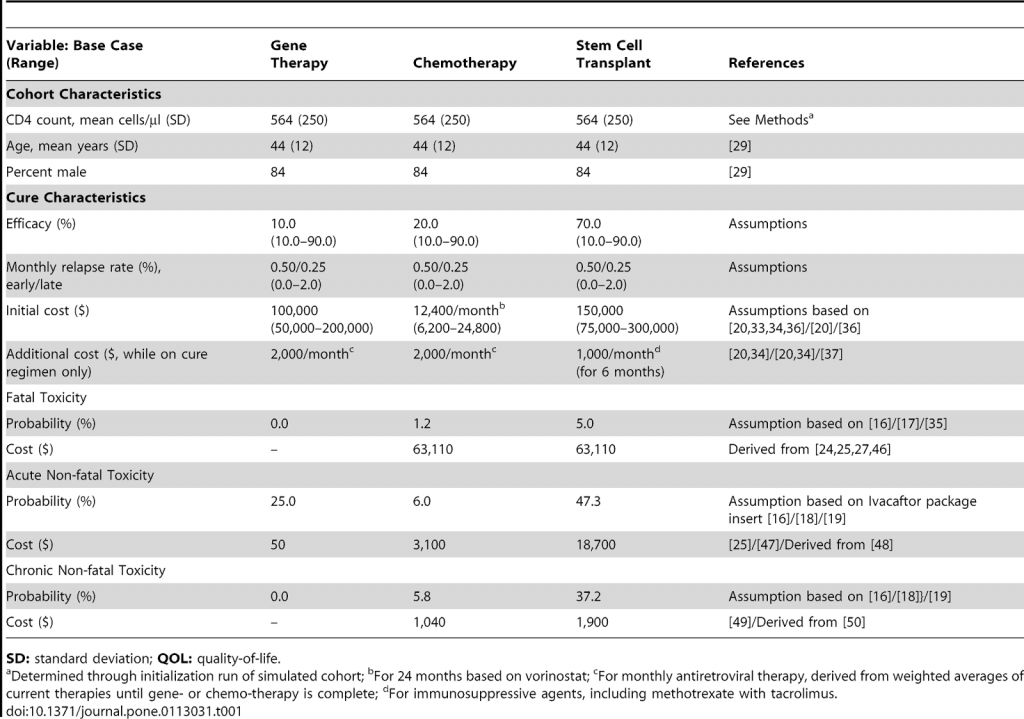- Published: November 14, 2014
- DOI: 10.1371/journal.pone.0113031
Abstract
Background
We examined efficacy, toxicity, relapse, cost, and quality-of-life thresholds of hypothetical HIV cure interventions that would make them cost-effective compared to life-long antiretroviral therapy (ART).
Methods
We used a computer simulation model to assess three HIV cure strategies: Gene Therapy, Chemotherapy, and Stem Cell Transplantation (SCT), each compared to ART. Efficacy and cost parameters were varied widely in sensitivity analysis. Outcomes included quality-adjusted life expectancy, lifetime cost, and cost-effectiveness in dollars/quality-adjusted life year ($/QALY) gained. Strategies were deemed cost-effective with incremental cost-effectiveness ratios <$100,000/QALY.
Results
For patients on ART, discounted quality-adjusted life expectancy was 16.4 years and lifetime costs were $591,400. Gene Therapy was cost-effective with efficacy of 10%, relapse rate 0.5%/month, and cost $54,000. Chemotherapy was cost-effective with efficacy of 88%, relapse rate 0.5%/month, and cost $12,400/month for 24 months. At $150,000/procedure, SCT was cost-effective with efficacy of 79% and relapse rate 0.5%/month. Moderate efficacy increases and cost reductions made Gene Therapy cost-saving, but substantial efficacy/cost changes were needed to make Chemotherapy or SCT cost-saving.
Conclusions
Depending on efficacy, relapse rate, and cost, cure strategies could be cost-effective compared to current ART and potentially cost-saving. These results may help provide performance targets for developing cure strategies for HIV.
Full paper:
https://www.plosone.org/article/info:doi/10.1371/journal.pone.0113031
https://www.plosone.org/article/info:doi/10.1371/journal.pone.0113031


